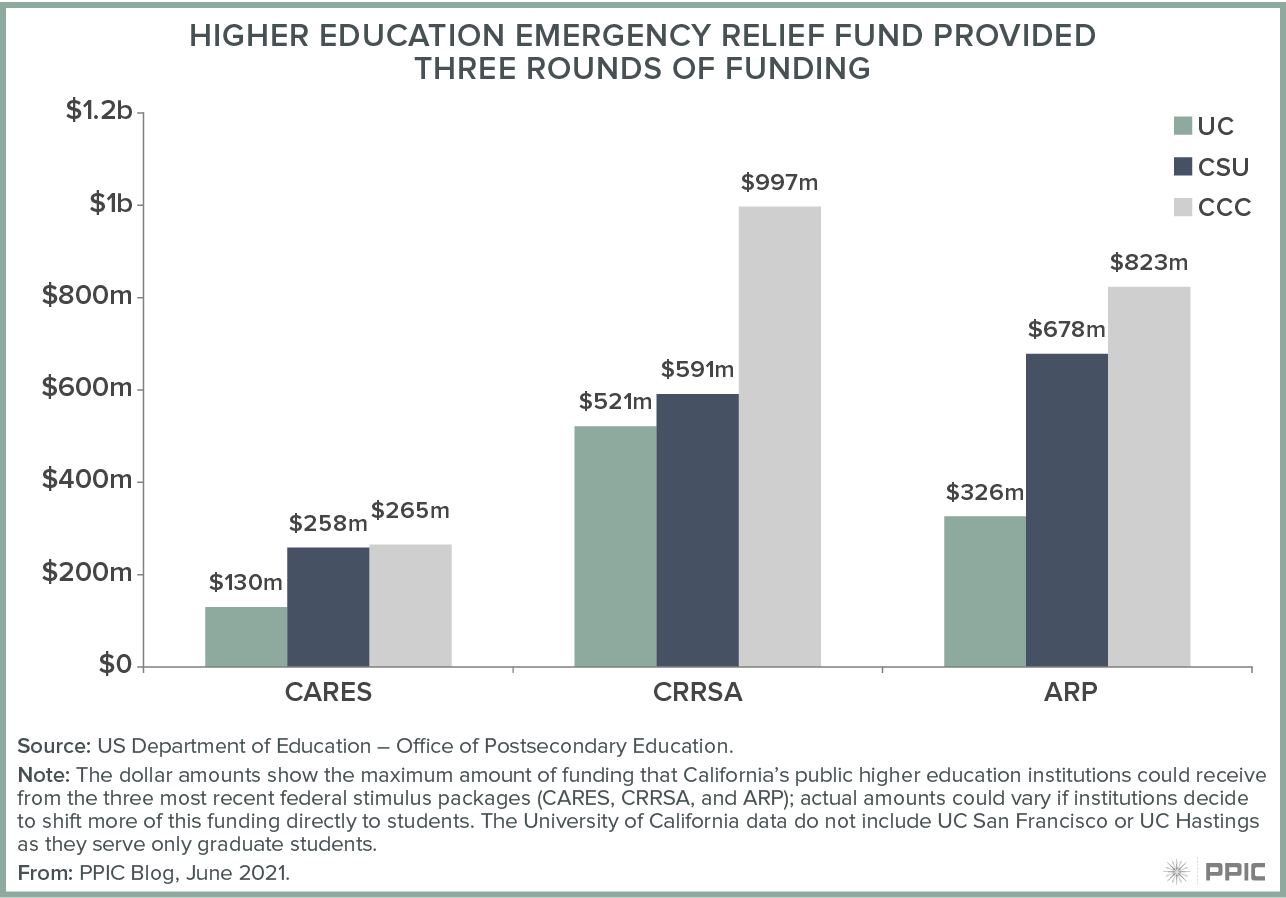What a difference a year makes. Around this time last year, California was projecting a pandemic-induced budget shortfall of $54 billion, with public higher education facing a budget cut of $558 million. It was the largest reduction of any state, accounting for nearly 30% of $1.8 billion cut nationwide from state higher education budgets. At the same time, revenue for California public colleges dropped as costs rose when classes moved online.
State leaders predicted that reductions in state funding might drag on for the next three to four years. The last time the state faced a significant budget deficit—during the Great Recession—higher education funding was cut by about one-third over three years, and tuition at UC and CSU tripled to make up the difference.
Now the state is projecting a $75 billion budget surplus. The most recent budget proposal from the legislature and the governor reverses last year’s cuts, providing nearly $1 billion in ongoing and one-time funds for UC, $1.4 billion for CSU, and $3.6 billion to the community colleges. The reversal in fortunes can largely be attributed to the nature of the pandemic, the state’s progressive tax system, and better-than-expected tax revenues from capital gains. Moreover, the timeliness and scale of federal stimulus funding has played a large role.
From March 2020 to March 2021, the total amount of federal funding provided directly to support higher education was $77 billion. The $2.2 trillion relief package from the March 2020 Coronavirus Aid, Relief, and Economic Security (CARES) Act included $14 billion in direct aid to colleges and universities through the Higher Education Emergency Relief Fund (HEERF I).
It should be noted, however, that students received around 50% of these funds directly in the form of grants; funding to institutions depended somewhat on the share of students receiving a Pell grant. The federal government provided direct funding to California public higher education institutions through several rounds of stimulus packages, at a total of about $2 billion for the community colleges, $1.5 billion for CSU, and just under $1 billion for UC.
The Coronavirus Response and Relief Supplemental Appropriations (CRRSA) passed in winter 2020 added $900 billion in economic relief, with $23 billion for the HEERF. And in March 2021, the American Rescue Plan (ARP) provided nearly $2 trillion in economic relief, with $40 billion allocated to higher education and $350 billion to shore up state budgets.

This federal funding largely helped state governments avoid significant cuts to their higher education budgets. California, the nation’s most populous state—and home to the largest public higher education systems—received the lion’s share of funding. The state’s public higher education institutions and students received about $1.4 billion from the CARES Act, $2.6 billion from the CRRSA package, and will receive about $4.5 billion from the American Rescue Plan.
California must now figure out how to avoid a fiscal cliff like the one in 2012, when the state exhausted its federal funds. In coming months and years, the state will need to spread out federal stimulus funding and invest in budget reserve funds. Moreover, investing in capital improvements and infrastructure, expanding online education, and paying down debts can help California grow and sustain access to higher education.



